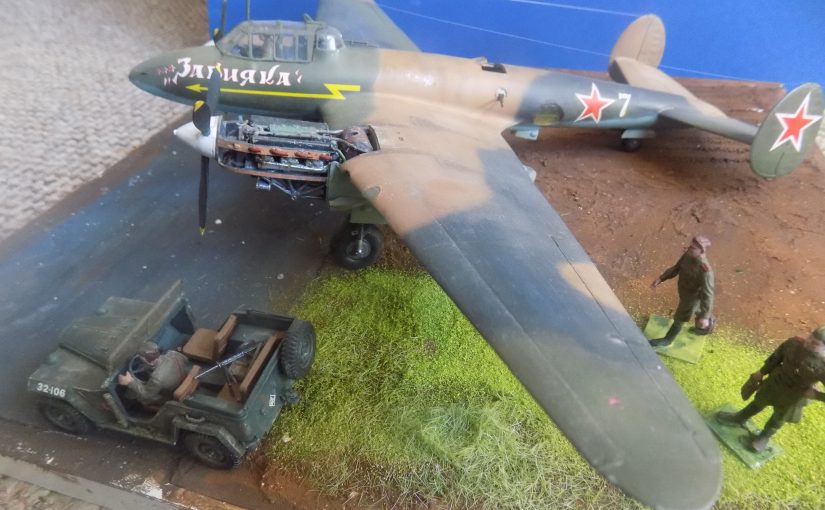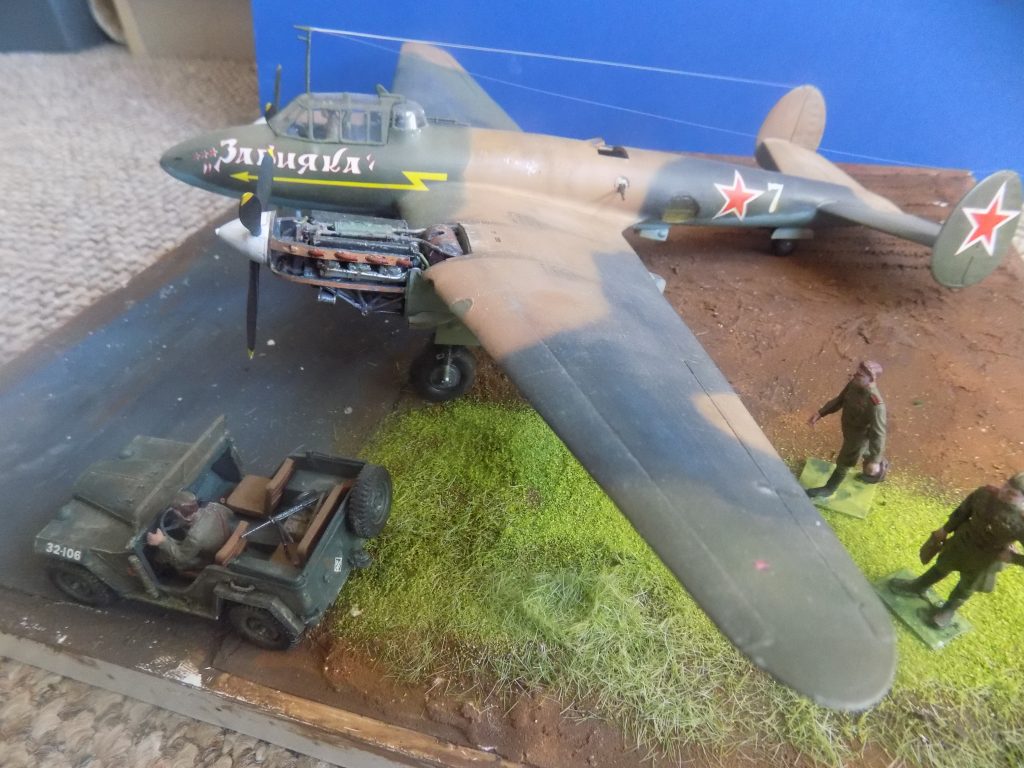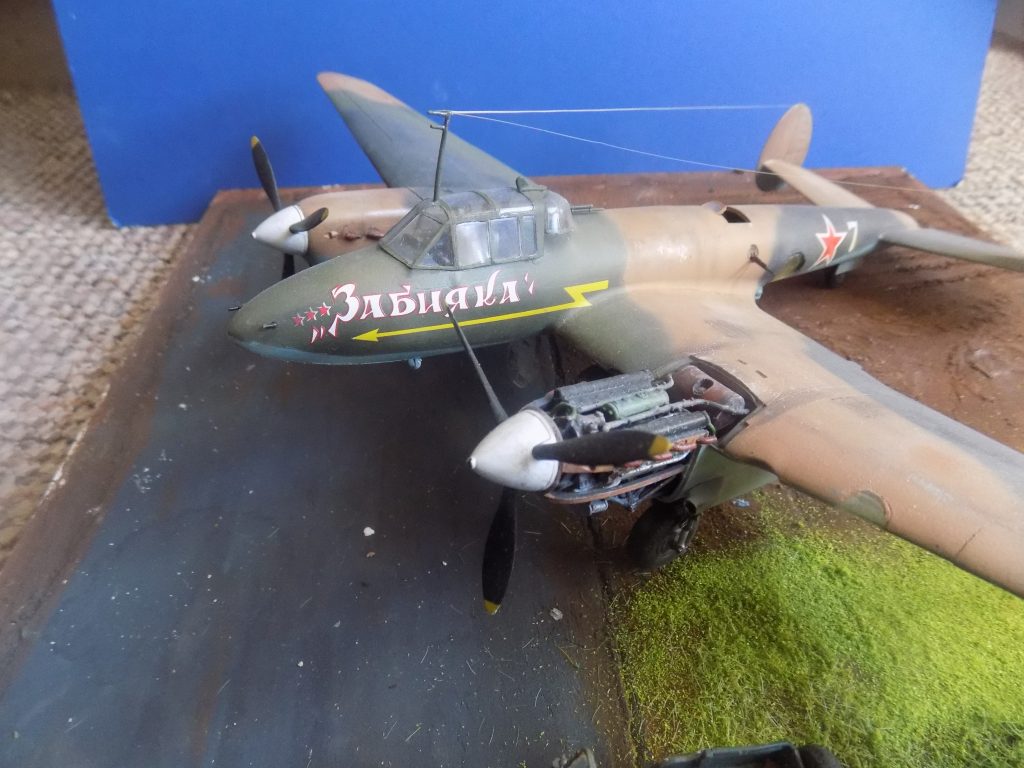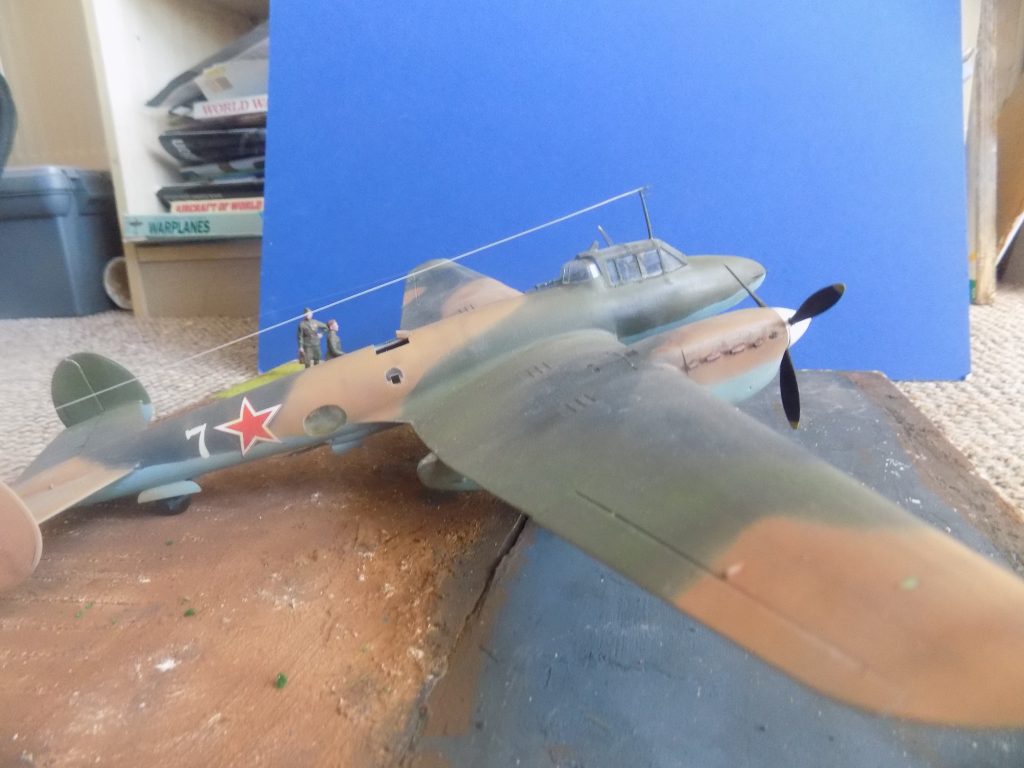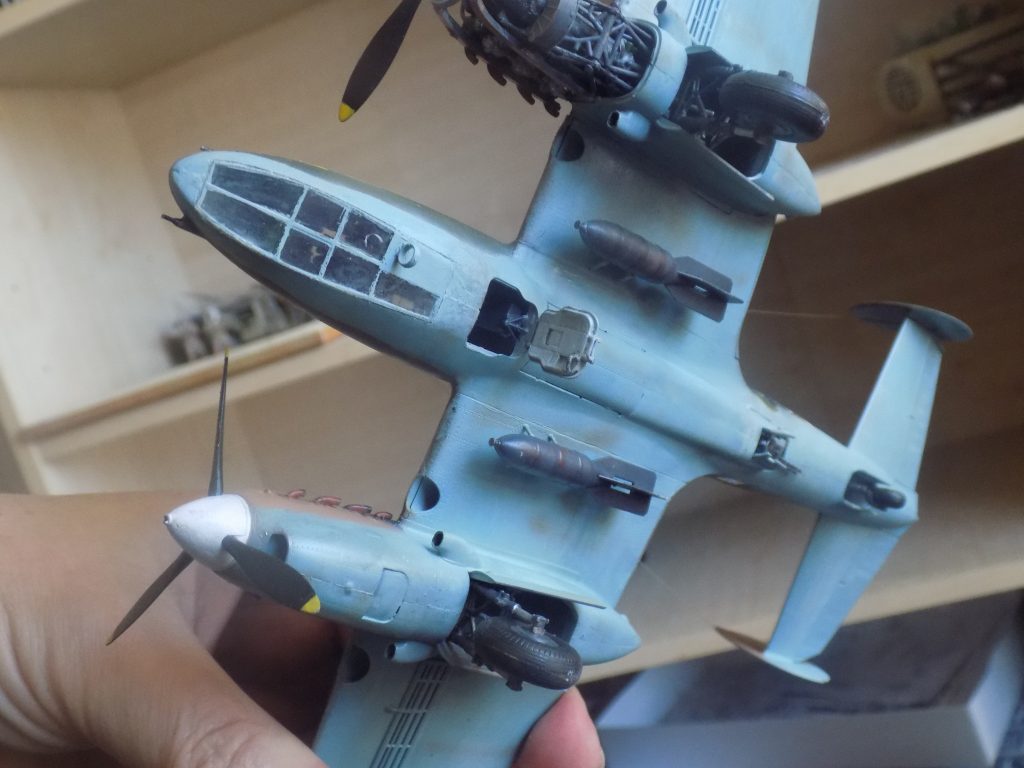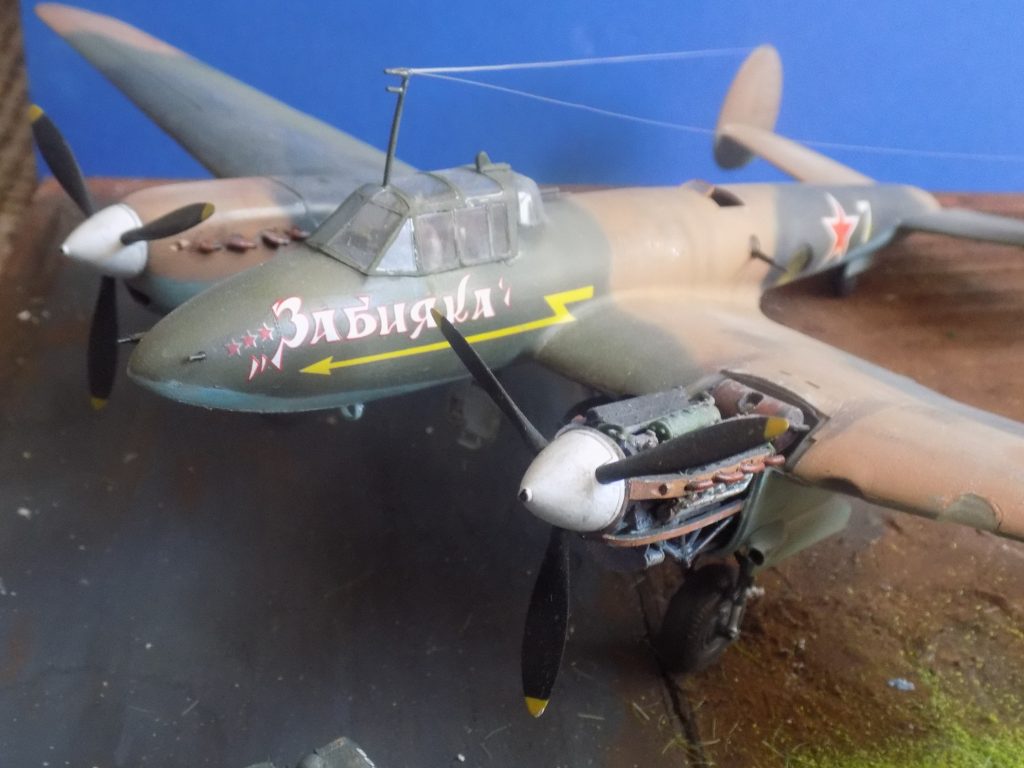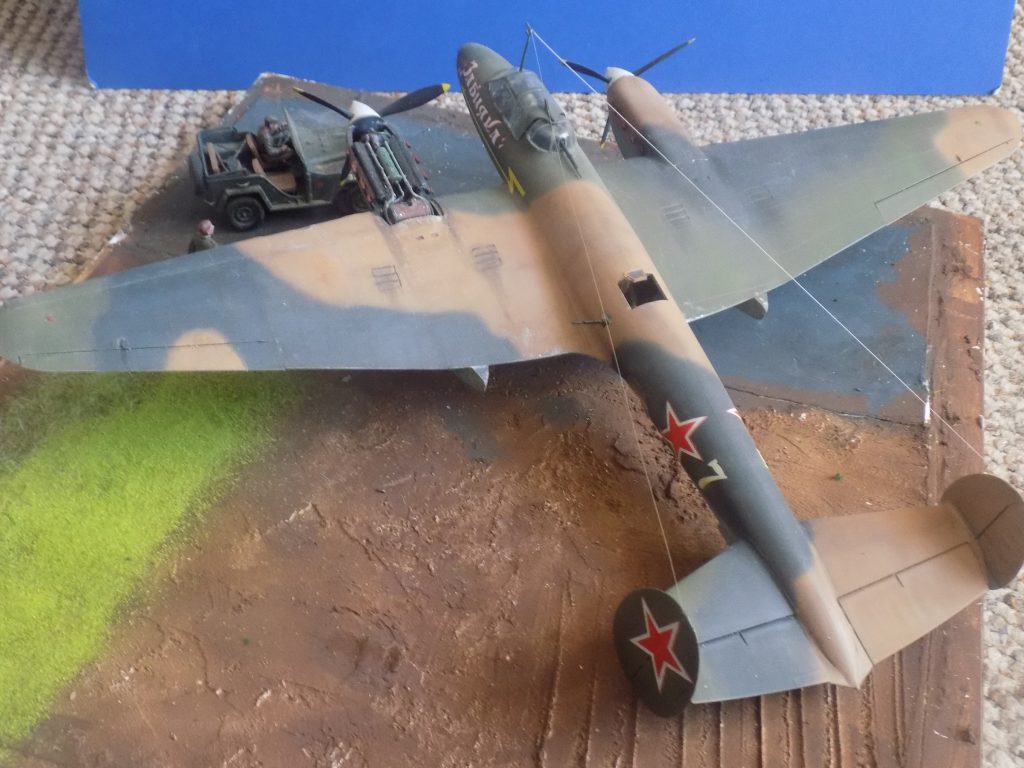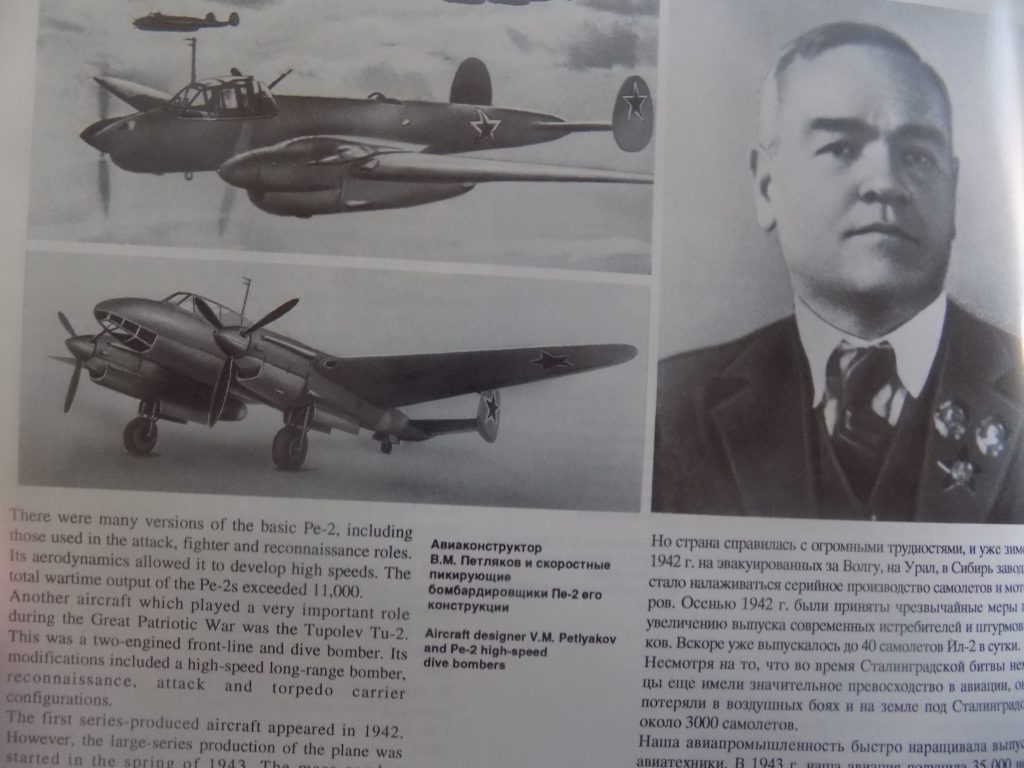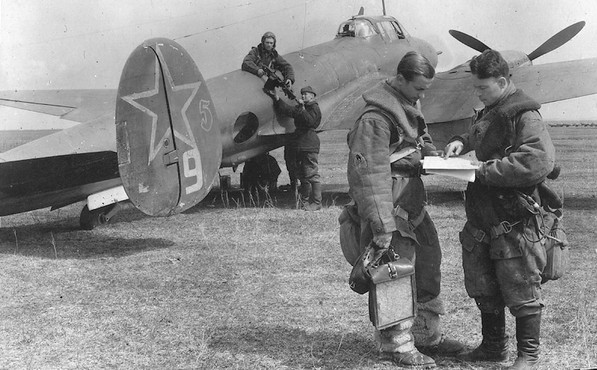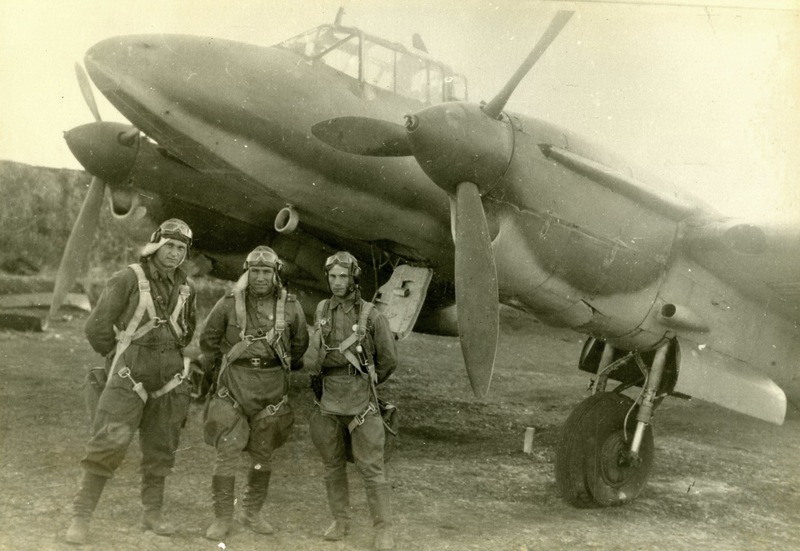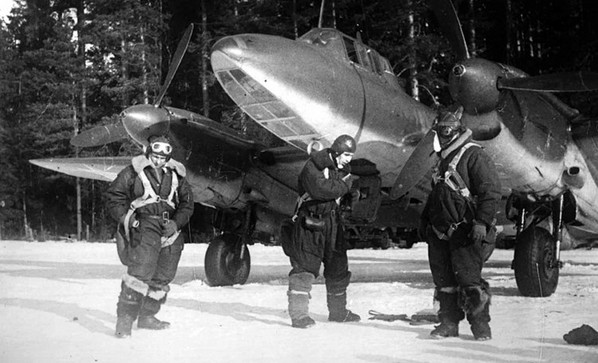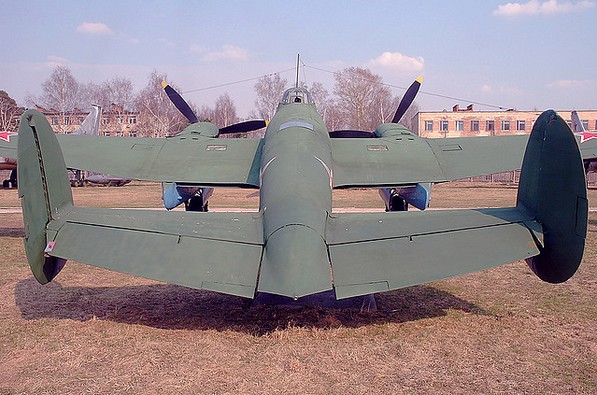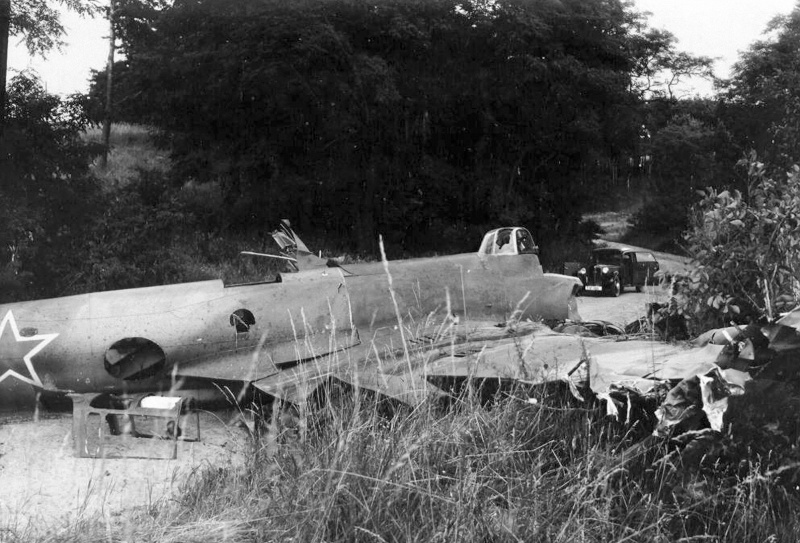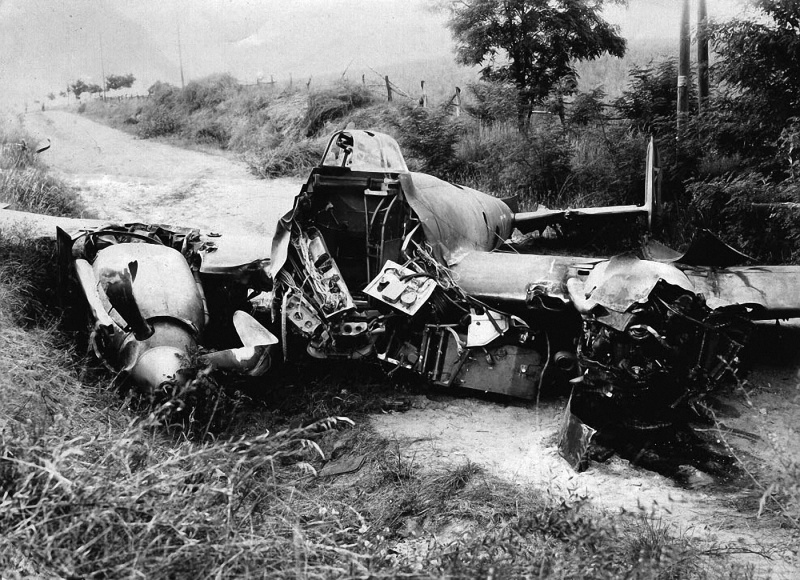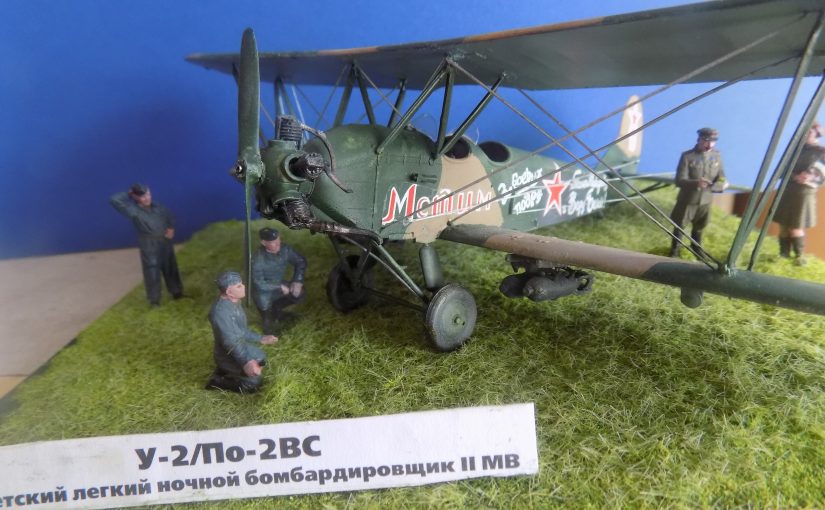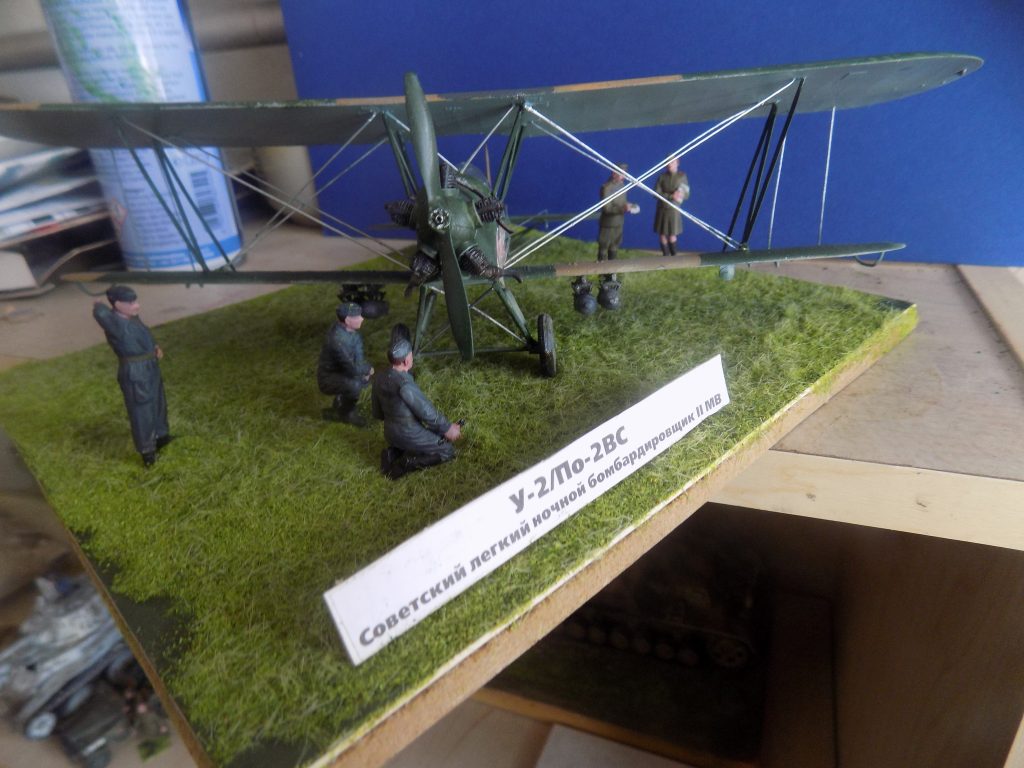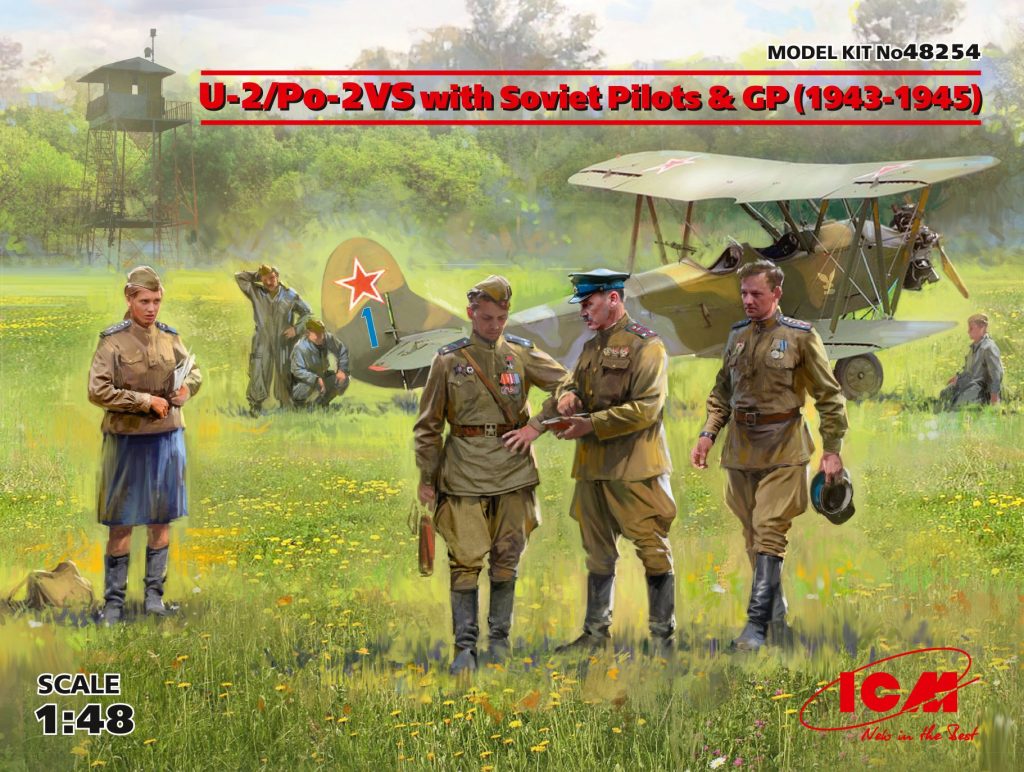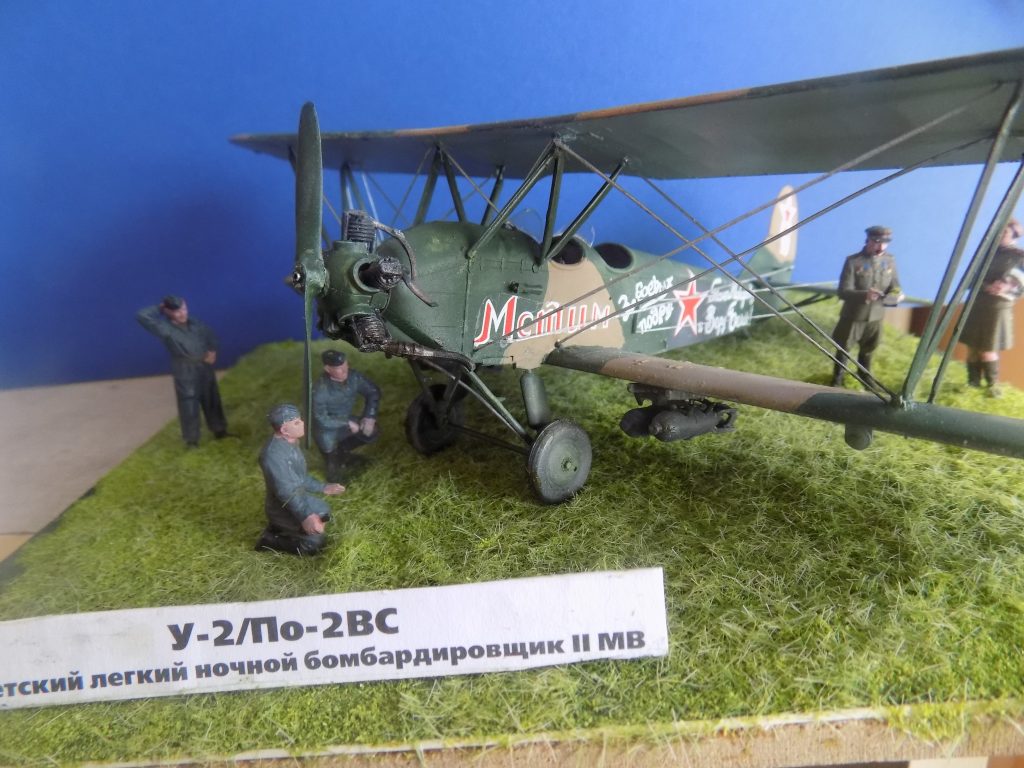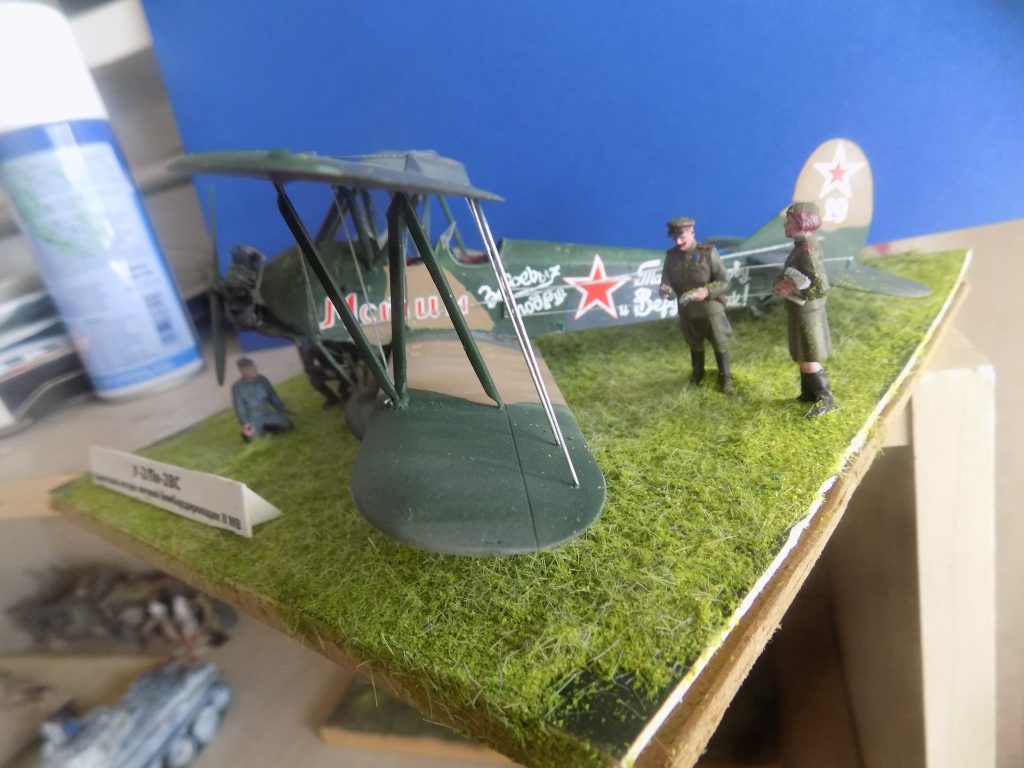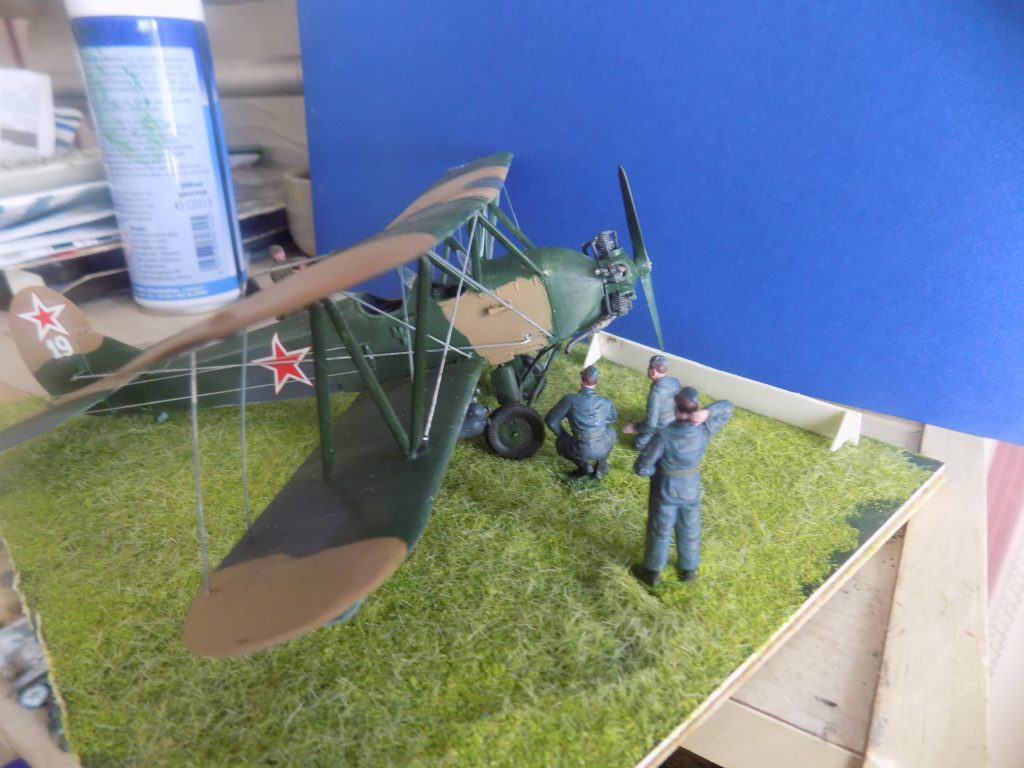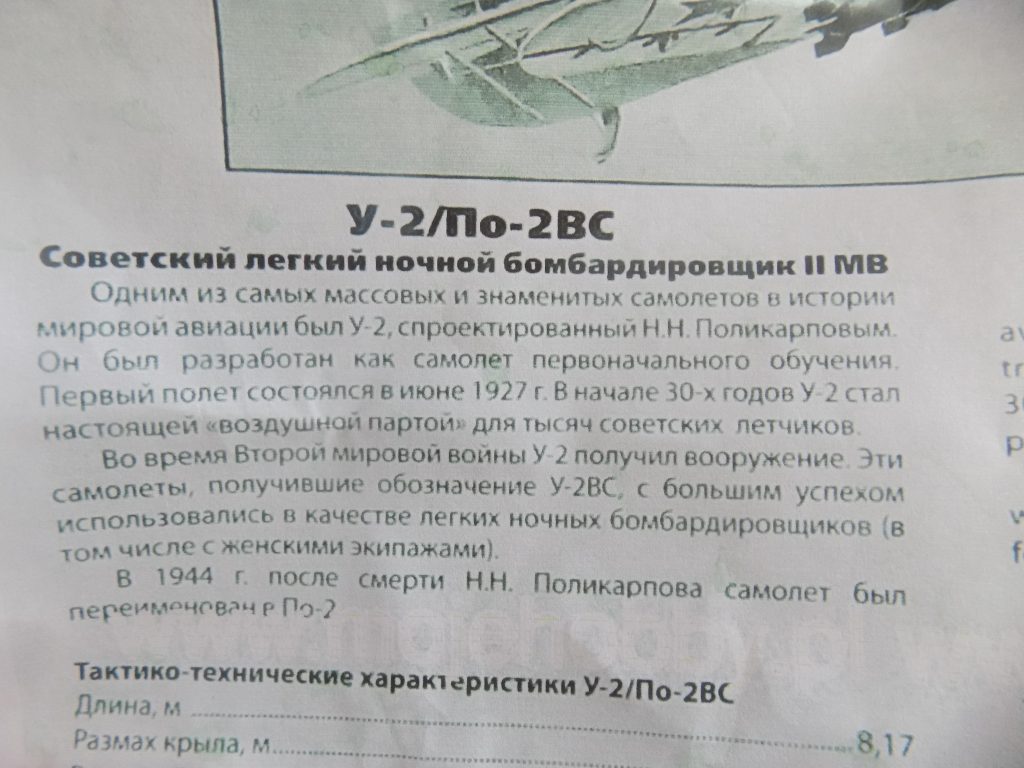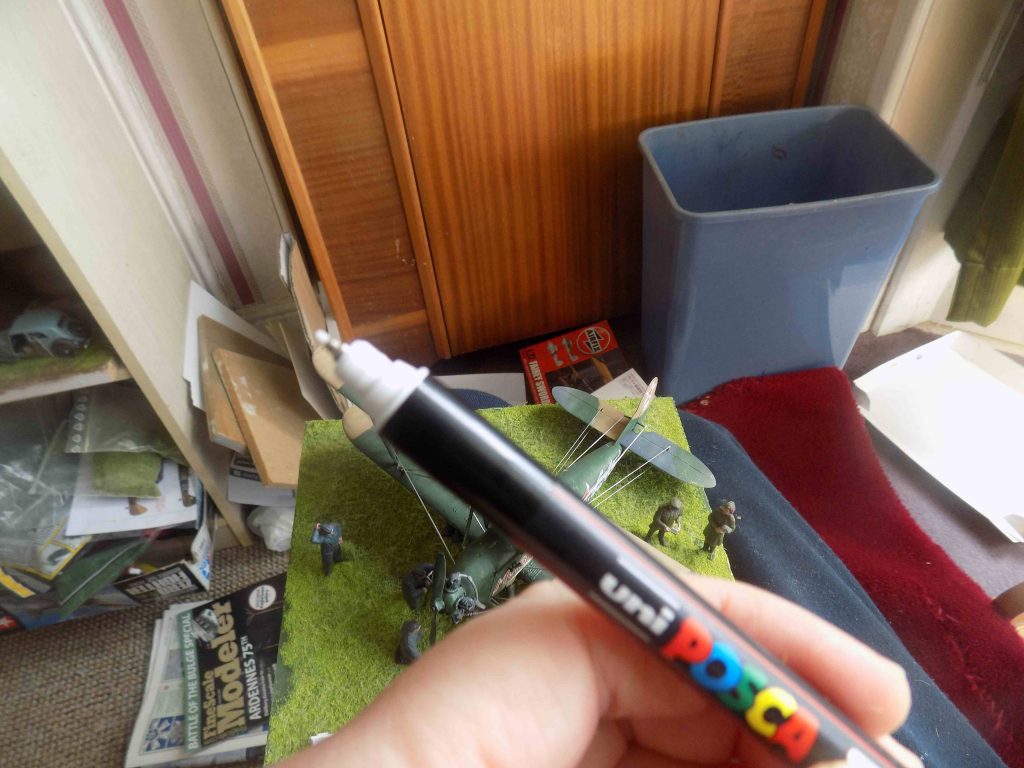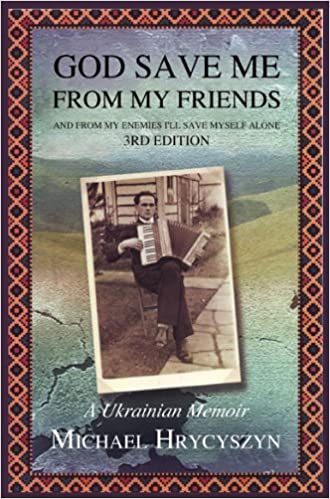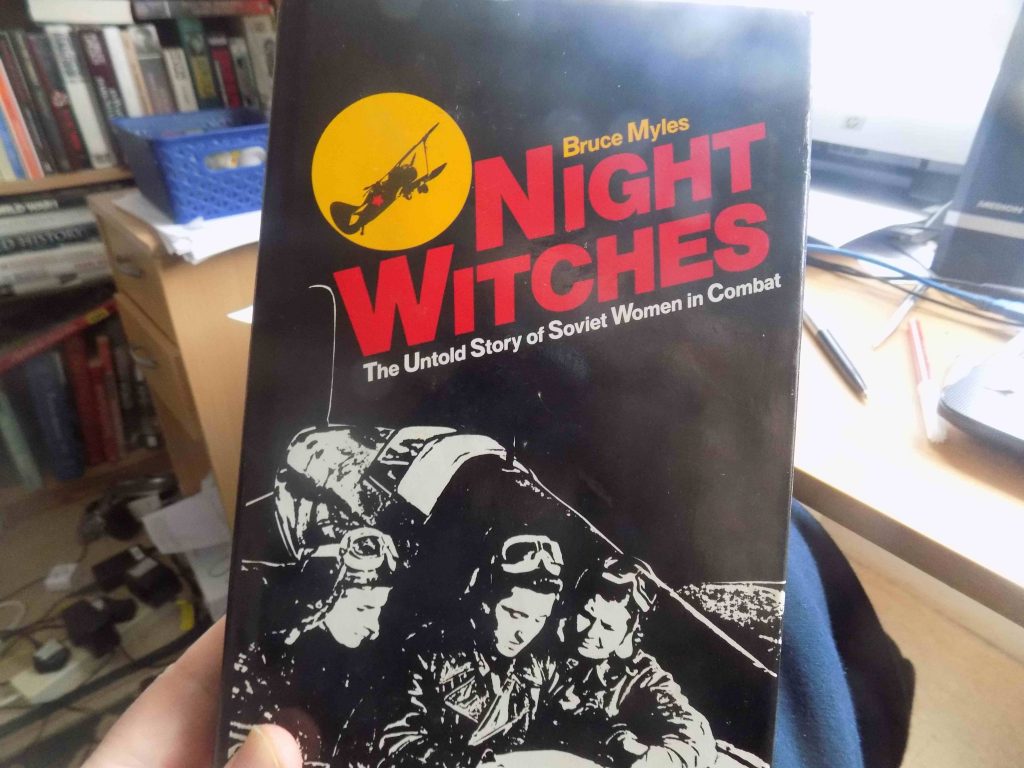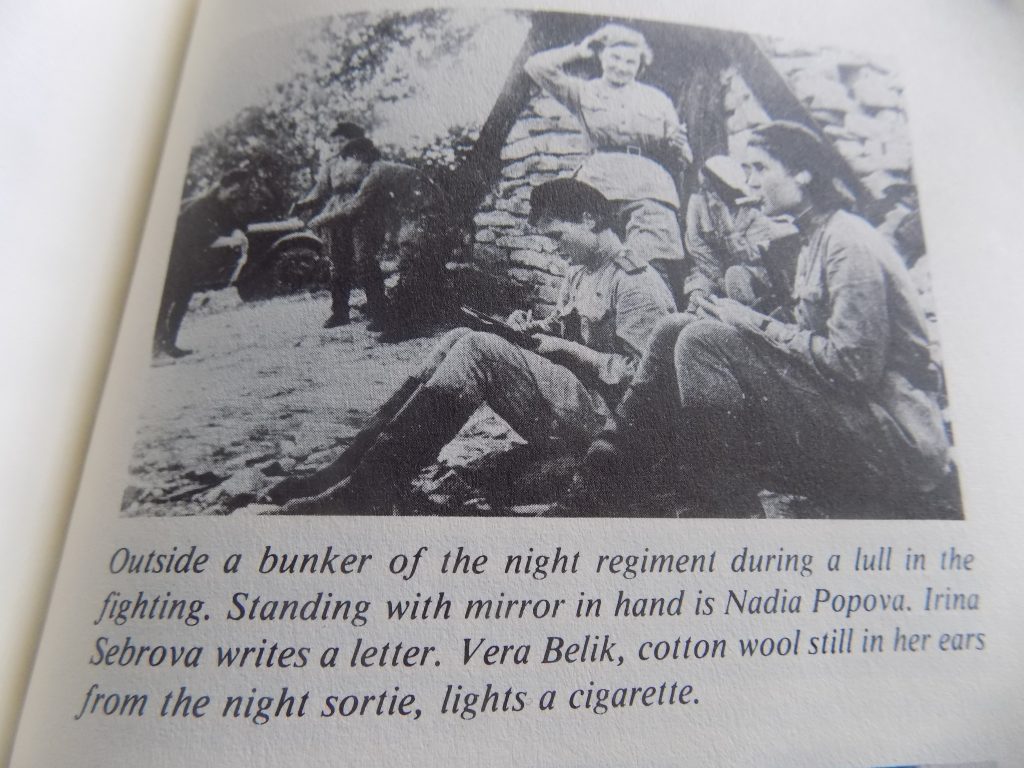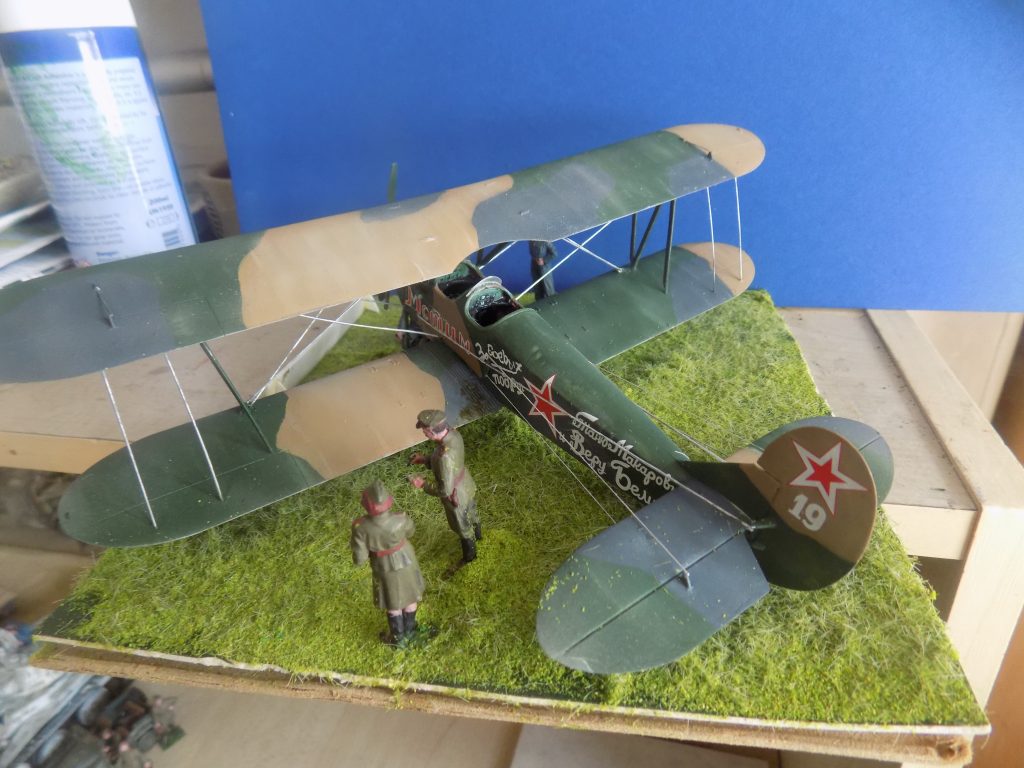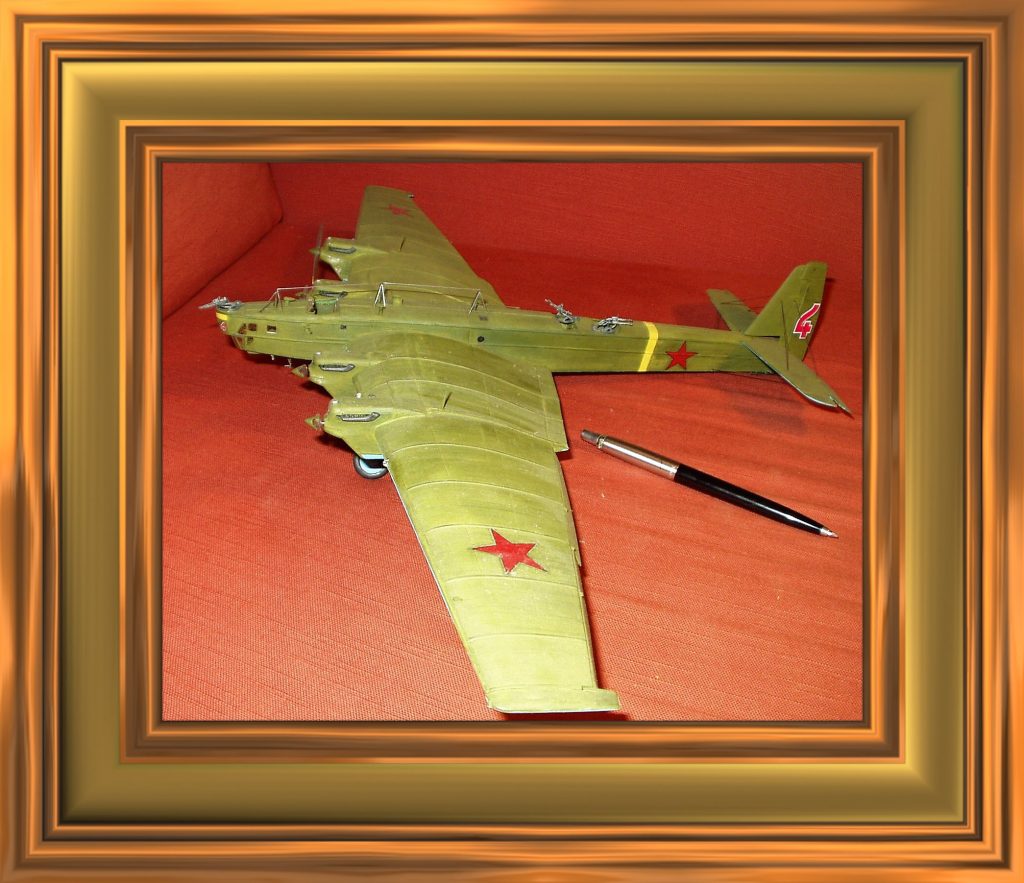
I built this model of the TB-3 many years ago but it is sadly no longer in my possession. It went into the modelling graveyard in the sky, i.e. my loft, and ended up damaged and then passed away forever. All I have left are these photos two of which I took in my backyard. I had to lie on the ground to get the whole thing in focus a feat I wouldn’t dare these days!
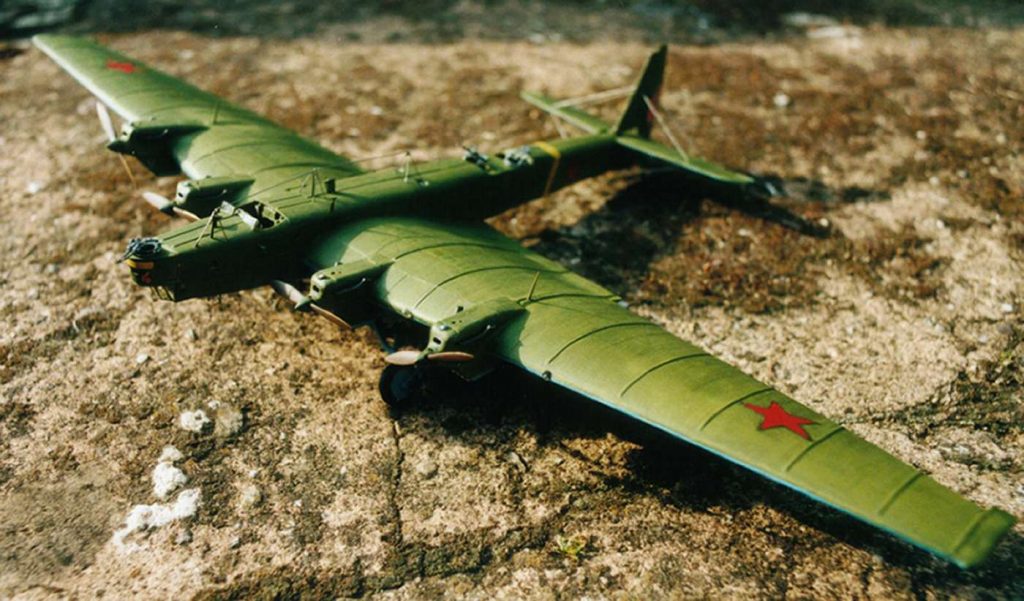
I think the main reason I let her go is that I was never entirely satisfied with the finished kit wing, which was a nightmare to assemble.
However, I felt it deserved an honourable mention as it is such an interesting and unusual subject and also an important part of aviation history. After all, it was the world’s first cantilever wing four-engine heavy bomber.
It also ties in with my little I-16 fighter as you will see below.
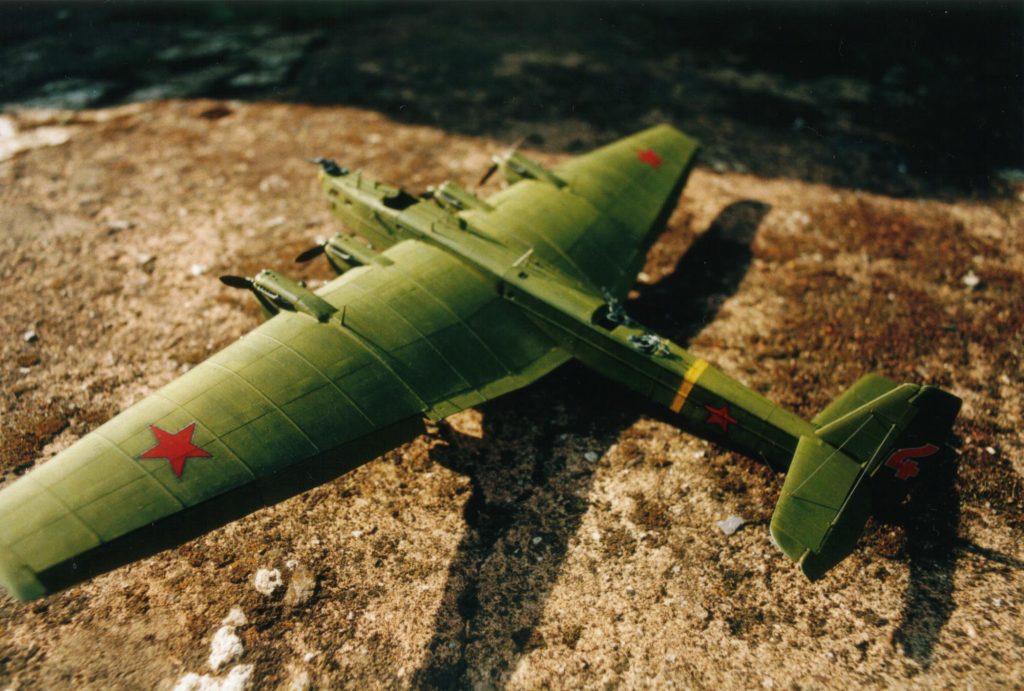
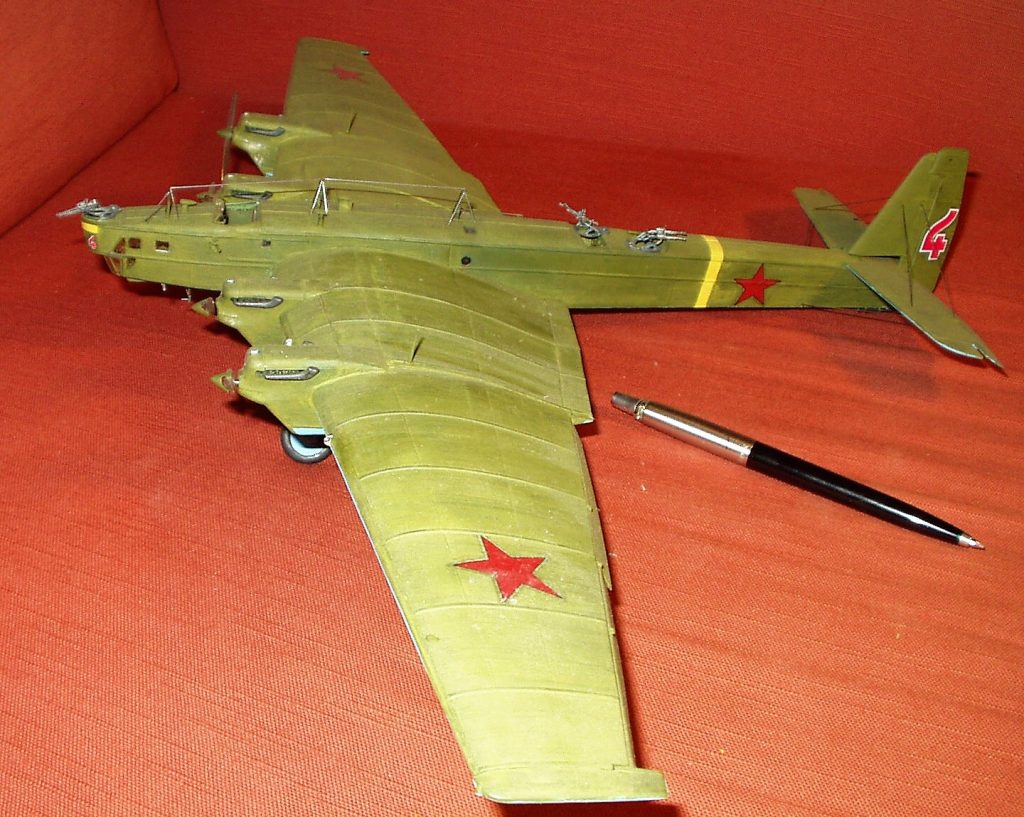
In the early days of my modelling career, I had a tendency to be carried away by size and this aircraft is a good example of it! The fact that the subject was Soviet and the kit manufactured in Ukraine might also just have pulled at the heartstrings a tad! A case of the heart ruling the head as usual.
Nowadays, I have learned that size is not everything and to make sure I have the requisite display space!
They say that when it came to aircraft design, Stalin was always impressed by two things, speed and size, and the TB-3 certainly fit the bill in regard to the latter.
The kit was manufactured by ICM of Ukraine and as I recall was an absolute pig to build!
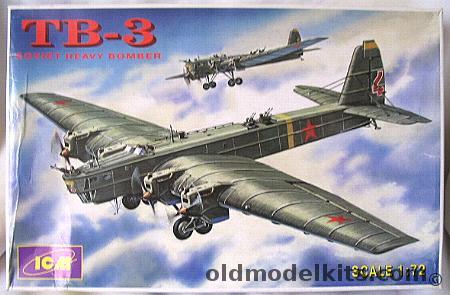
To tackle this bizarre Tupolev Titan, looks like a boat with wings stuck on, you almost needed a degree in engineering. The carcass of the beast is chock full of bulkheads, spars and formers. Unfortunately, nothing seemed to fit, the plastic was horrendous, parts were warped, location devices missing and the instructions vague and confusing!
The most frustrating part of the build was trying to get the two wing halves to close on top of the internal spars. In the end there must have been a 5 mm gap at least between them which I was only able to overcome using clamps, packets of super-glue and brute strength!
The wing surfaces were heavily corrugated and made for an interesting feature but also made it virtually impossible to sand and file!
And now for some history of this brute.
“The 1930s was a period of rapid development of aviation in the USSR. Air parades, films about hero pilots, the opening of air schools throughout the country, the establishment of new records for altitude, speed and flight range – aviation had become a real cult for the young Land of Soviets. The heavy bomber TB-3 (or as it was also called ANT-6) is a real symbol of that era. Not a single air parade could do without this giant and there are many records on the TB-3 account, this plane landed on drifting ice floes and participated in the war in Spain”. (From MilitaryArms. RU)
Despite its ungainly looks, when Tupolev’s heavy four-engined bomber ANT-6, later designated TB-3, first appeared it was considered the pinnacle of aviation design- very hard to believe now! Many of the technical solutions employed during its construction would determine the development of heavy aviation for decades to come.
The prototype ANT-6 made its first test flight in December 1930.
The total number of TB-3s manufactured was 818 with a number of modifications taking place during the mass production period.
Its overload version could carry up to 5 tons of bombs with the flight range exceeding 3,000 km. The defensive armament of the first models was 5 DA machine guns mounted at different points. The crew consisted of from 6 to 11 men depending on the version.
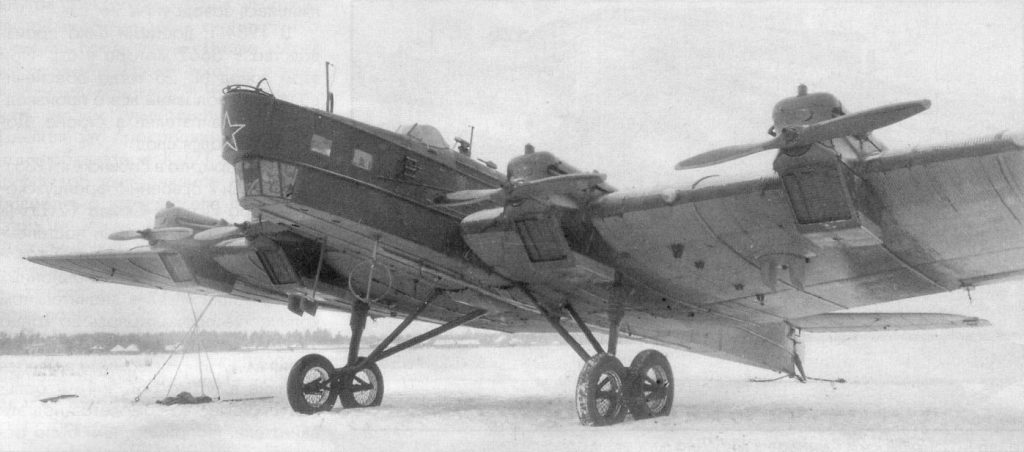
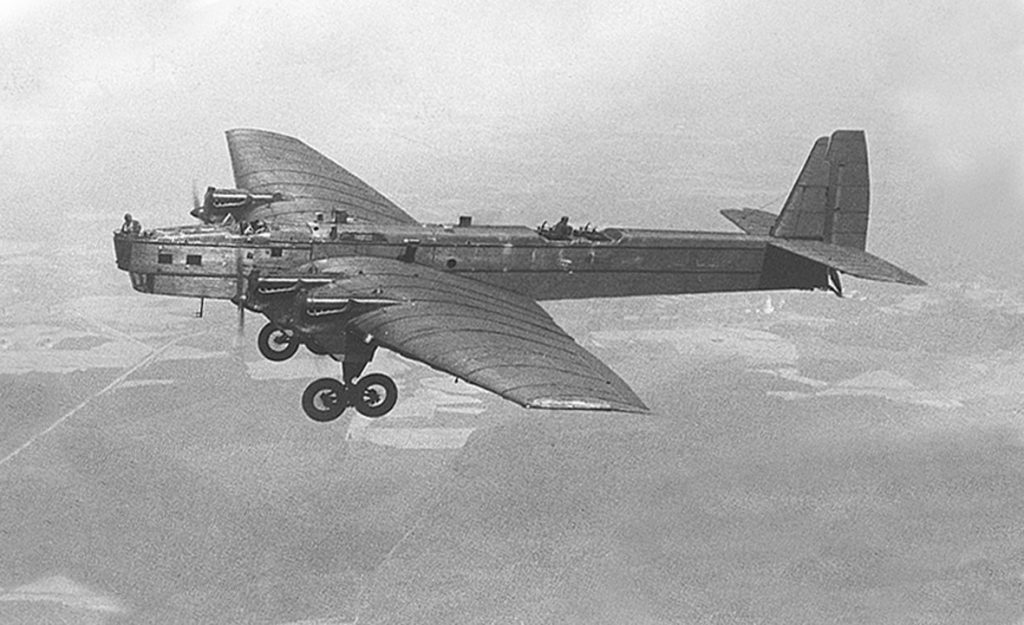
The TB-3 became the basis of the Soviet bomber fleet during the 1930s with two powerful aviation groups organised around it based in the European part of the USSR and the other in the Far East. In the largest military exercises in the Kiev and Belorussian Military districts, the TB-3s were used in the roles of bombers and transports.
I found the following on a Russian website which I simply had to quote:
“The TB-3 took part for the first time in military operations in the summer and autumn of 1937. They acted against the “internal enemy” – the Basmachi in the Pamirs. To support the operations of border guards and units of the Red Army, 30 R-5 and three TB-3 were then involved. The latter transported people and goods to hard-to-reach areas”. (airpages.ru).
Now I never knew that! Sorry but obscure facts like that really grab me. The militant Bashmachi movement was a protracted uprising by Muslim peoples against Russian and Soviet rule in the 1920s and 1930s in Central Asia. You can stop groaning now (or yawning).
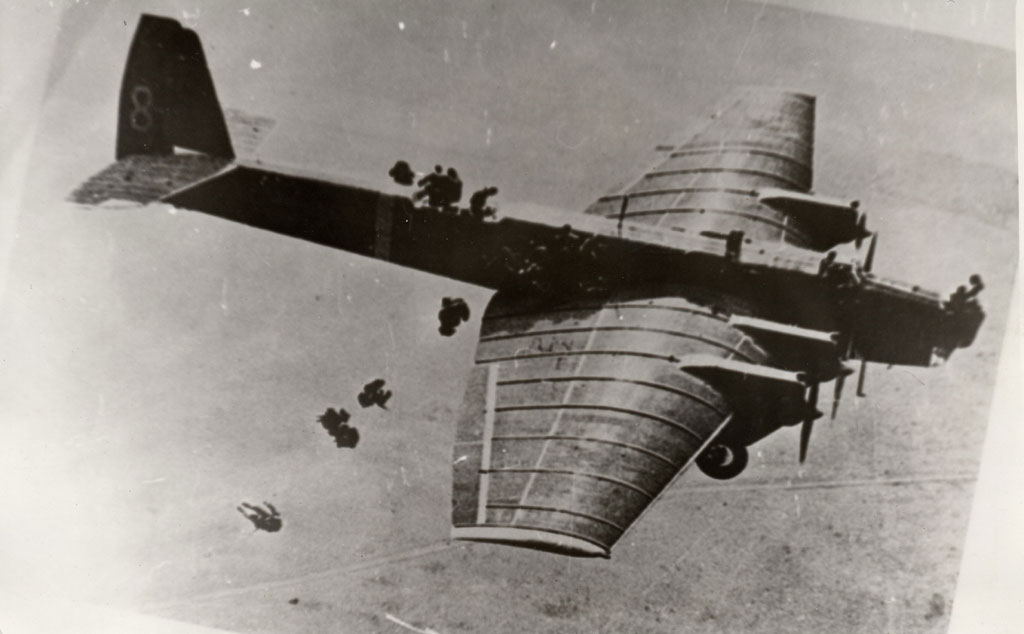
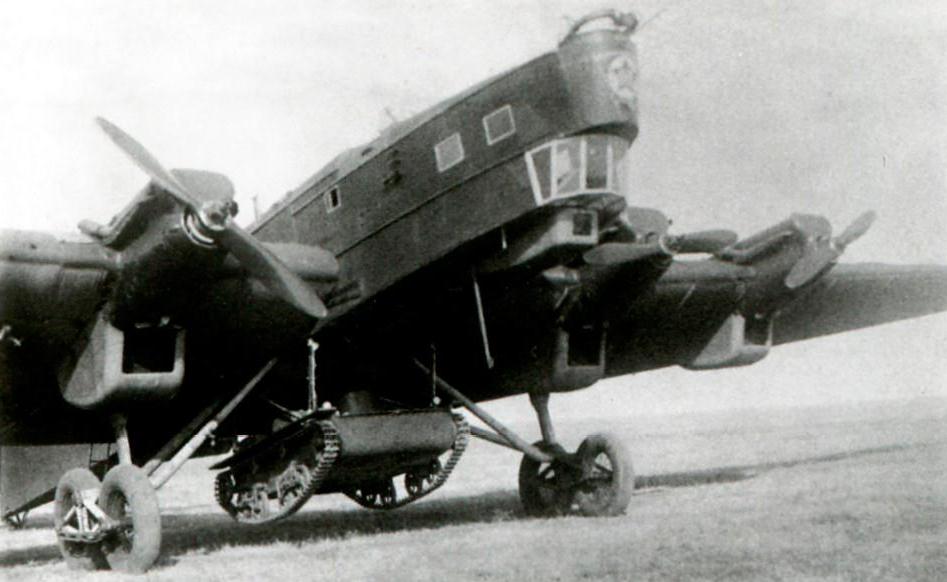
By 1939, the TB-3 was obsolete but it saw action in the Winter War against the Finns and a few took part in fighting against the Japanese at Lake Khasan and Khalkin Gol. It was used extensively during the Great Patriotic War for transporting troops and frequently as a night bomber due to its vulnerability, i.e slow speed and weak defences.
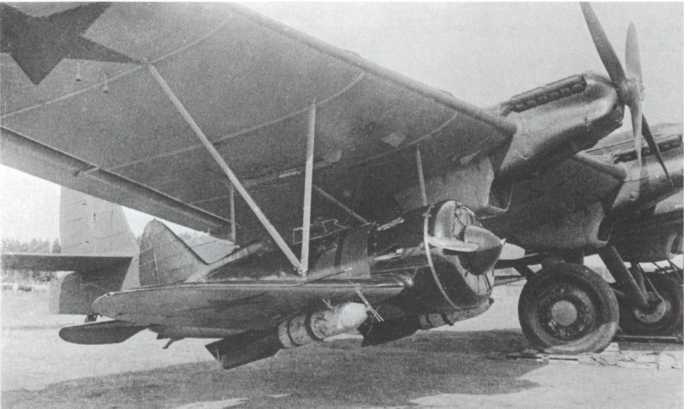
Believe it or not, the bomber could also act as a kind of aircraft carrier or mother ship for between two and five fighters. This was the so-called Zveno (‘Chain’) or parasite plane project developed in the USSR in the 1930s. In the definitive SPB version, under the wings of the bomber, two I-16 fighters could be fixed.
In 1941, two TB-3 carrier fighters made several raids on the Romanian oil fields at Ploesti. They not only destroyed the oil pipeline, but also hit a strategically important bridge.
I believe this particular kit is no longer in production although you can still find it on e-bay and specialist model sites at ridiculous prices. It would be really lovely for another manufacturer to take up the challenge again of releasing a model of the TB-3. I really can’t see Airfix accepting but perhaps Zvezda of Russia!? You never know, I might then be persuaded to have another go but only if there are no wing spars!
WARNING! The following long footage is ONLY for dedicated Soviet aircraft fanatics. But the background music is nice.
